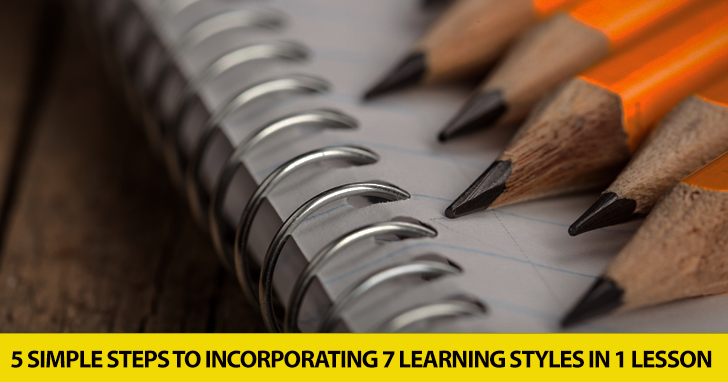Seven in One Blow: 5 Simple Steps to Incorporating 7 Learning Styles in One Lesson


Do you have students who consistently ask you to write down a new word? Or perhaps students who open the book and try to find the page with the language point you happen to be teaching? How about students who respond better to visual stimuli rather than audio? Then, in all likelihood you’ve got visual learners: these are students who learn more easily through images or written words.


Visual learners of all ages and levels learn better with flashcards. The great thing is that flashcards are highly versatile; there is a huge variety of activities you can do with your class – they’ll never get bored! Use them to introduce new vocabulary, or practice, review or even test their knowledge. And don’t forget flashcard games!
Take a comic strip and white out the speech bubbles. Have your students complete them with their own story. Or have your visual learners draw one themselves, or a cartoon to illustrate a scene. This type of activity also gives visual learners their much-needed quiet time. They thrive in learning environments where they can think and concentrate.
Having visual learners doesn’t necessarily mean that they have to only use pictures or illustrations to learn. They also relate quite well to the written word because they can “see” it, and so it is much easier for them to remember words they have practiced. Use all types of puzzles from crosswords to word searches – create your own!
One of the best games you can play with visual learners is Pictionary. But instead of using the board game as is (because it may be too hard), make your own version with word cards that you can create to suit your students’ level.
Whether you use it for drawing or writing, you should use the whiteboard a lot in classes with a great deal of visual learners. And don’t just write or draw in them, be sure to play plenty of games. Use different color board markers – visual learners love colors! You can color code new vocabulary, for example, by writing verbs in green, adjectives in red and nouns in blue.
For visual learners, concepts and words often get lost if they are not organized in a graphic that is both clear and easy to remember – and this exactly is where graphic organizers come in. From Venn Diagrams to Sequence Charts, these graphic helpers really get the point across.
Visual learners may find listening to audio too hard. They have trouble grasping concepts they can’t clearly “see”. But they must still develop their listening comprehension skills, which is why video is a lot better than simple audio. Visual learners get images and context to accompany what they hear, and this boosts their listening comprehension.
Multimedia presentations like PowerPoint slides also help students retain new concepts and words. They are easy to make and very effective in a classroom full of visual learners.
When reading with visual learners, it’s much better if you use books with illustrations. There are wonderful graphic novel versions of classics like Treasure Island, A Wrinkle in Time or The Odyssey.

There are certain resources or strategies that will not work well with visual learners. These are mainly:
By figuring out how they learn best, and catering to this particular style, you’ll be making use of abilities your students already possess. Struggling to get them to do something (like listen to a CD) simply because they “have to” or “it’s what other classes do” is not only counterproductive, but also frustrating for your students. Work with them, and their abilities, and you’ll soon see them making progress by leaps and bounds.